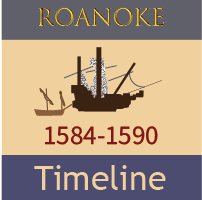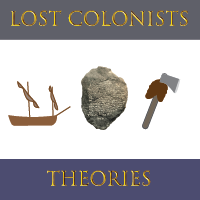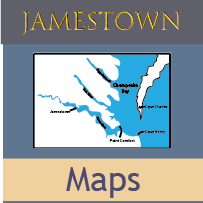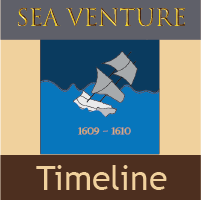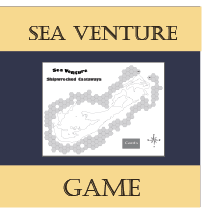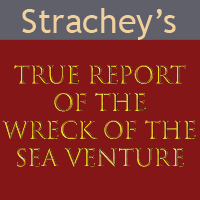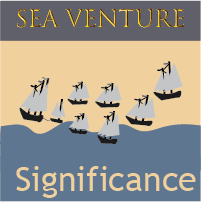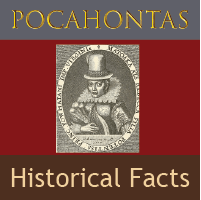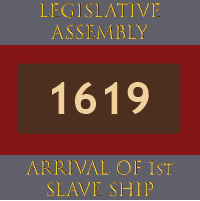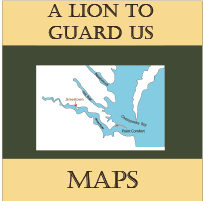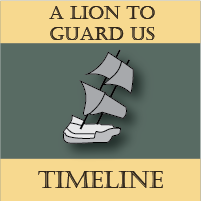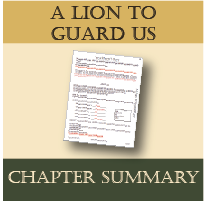Wreck of the Sea Venture
Significance of the 1609 wreck of the Sea Venture off the coast of Bermuda
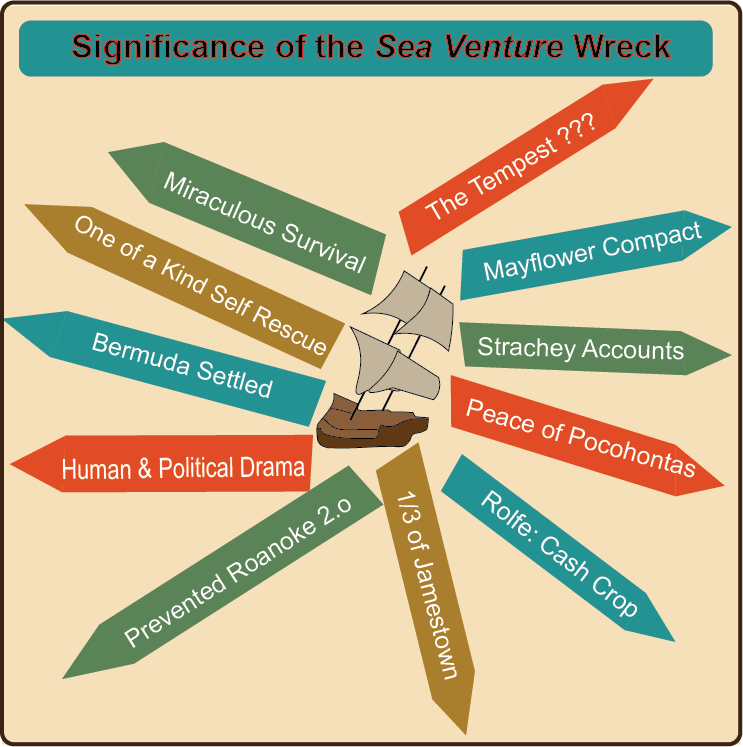
But wait! There's far more to this Sea Venture tale. Indeed its historical significance is so great, even if proclaimed rather late, that any ties to Shakespeare drown in comparison.
Survived!
Let's start with the obvious: an incredible survival story. The admiral of a doomed ship on its first voyage miraculously sees uninhabited land through the tumultous waves threatening to destroy them all. Thousands of miles from home and hundreds of miles off-course, the islands appear on the horizon. While making for shore, they sail through a channel so narrow the deep sea divers who have searched the wreck-site have declared they had only a few feet on either side or their battered craft would have been turned to splinters by the rocky bottom. (Hume, pg 1) Stuck on the rocks off the shores, they successfully row every sailor and passenger to land over many hours and multiple trips. When word of the rescue finally reached England 18 months later, the country declared such intervention could only be divine. It wasn't until 1970's when that narrow channel was explored that we realized just how divine it was. Statistically nigh impossible.No doubt the passengers gave thanks for their deliverance. But - it was centuries ago - wrecks happen as do near misses. This was just one of them. Right?
Nope. Far more to this story. It turns out that their wreck and survival made them the favored ones of their original fleet. If those 153 travelers had sailed to Jamestown with the other 450ish individuals on the other ships in the fleet, they would have faced the same fate. Those other ships arrived in August/September 1609, just months before the horrendous event we call the Starving Time. While their fellow travelers were under seige from natives and suffering gruesome starvation, our Sea Venture passengers lived a relatively comfortable winter with plenty of food and tropical weather. (It WAS winter, but a mild tropical winter at that.)
Drama, Life, and Politics on the Islands
Let's, for the moment, forget our starving Jamestown forefathers and focus on the island castaways. While they were well-fed and spared Jamestown's fate, they had drama enough. Treason, murder, mutiny. Execution. The mysterious and suspicious disappearance of one of their two native members. Political and theological disputes. Love, marriage, birth. And of course death. Their survival rate was extremely high, (none died in the wreck.) There were seven deaths recorded during the months of their exile. The one hundred and fifty three stranded passengers did much more than just look wistfully to shore waiting for rescue. Here's a page turning nine-month drama that movie-makers have somehow missed.Who Needs Rescuers?
Another bullet point: they built two ships and rescued themselves. One they built from material salvaged from the Sea Venture and the other from trees they cut down on the forested island. This single feat earns them a respectable place in the history of mariners and explorers.We will over-look the less-significant act of converting their long-boat into a small ocean-going vessel (it's fate was tragic) and the more expected accomplishment of building canoes to explore nearly 200 islands that made up their winter habitat. They rescued themselves. Good thing too, because no one else was coming for them. Their loss was assumed in Jamestown and at home in England.
Beyond their bravado in surviving, legislating, building and sailing, we must take note of the significance of the time of their eventual arrival in Jamestown. In fact, more recently they have been creditied with saving Jamestown and saving democracy. It's a debate: what WOULD have happen to Jamestown, to Virginia, and to America if the Sea Venturers hadn't ventured into the embattled fort when they did?
Jamestown At Last
After their miraculous survival, ten-month sojourn, and journey on self-made ships, they arrived in Jamestown May 1610. There they found the few surviving inhabitants of Jamestown mere scarecrows hopelessly awaiting their impending deaths. The Sea Venturers were able to feed them. (Unfortunately in their ignorance of Jamestown's predicament they didn't bring any more food than they thought they would need for the voyage. But that small amount was more than the Jamestown residents had had available for a long time.) The new arrivals from Bermuda attempted to find new food sources near Jamestown but finally concluded the situation was hopeless and decided to sail themselves and the few surviving colonists back to England on their newly minted ships.Again, the story is breathtaking. The very day they sail, Lord De La Warr arrives and orders them back into the fort. (We can only imagine the groans and forbidden oaths.) Thankfully, the leaders had forbidden the Jamestowners from burning the much-hated fort they wanted to destroy on their way out. Sooner than they could have imagined, they would be back in it, dependent on the protection of its thin walls.
Some among us may discount the Sea Venturer's impact since Lord De La Warr and ensemble were enroute to Jamestown even at the time the Sea Venturers arrived there. But given a few more weeks, the inevitable toll of starvation would have likely left less than a dozen besieged residents - if the natives hadn't already discovered their depleted numbers and finished the job. De La Warr found the bodily condition of the Starving Time survivors much improved than the Sea Venturers found them.
Had the Sea Venturers not arrived first, Jamestown would be Roanoke 2.0.
In addition to saving the few survivors and saving the fort, our SV survivors gave De La Warr about 130ish Sea Venturers (some had left with with Admiral Somers, so it gets difficult to keep up with their exact number at specific times). But the Sea Venturers provided about 1/3 of the man power that De La Warr and the Virginia Company had working for them at the time.
Support for the Virginia colony hung by a thread. The financial investment, not to mention human investment, was largely lost. So what WOULD have happened if the three ships brought by De La Warr had found only a few starving souls inside the fort?
We can make our predictions. They likely would have returned with reports of another lost colony. Would America have been colonized by Europeans? Eventually, yes. But by the English? Maybe yes, maybe no. But there would be no Virginina colony. No Plymouth colony either. The history books would be entirely different. And likely this web-page would be written in a different language. (See Glover and Smith below.)
Heavenly Utopia on Earth
So besides saving the Jamestown colony, what other import did our Venturers have? The Bermuda Islands!Though the wilds of Virginia depleted the human and financial resources sent to it for decades, Bermuda was a paradise for survivors and investors. The British claimed it. They still do.
Bermuda, it turned out, made them money immediately. It was an instant reward, even while support for Virginia was waning. (Note to those weak on history: Virginina and the other colonies WOULD become financial secure within a few decades. Sometimes investments take a little time.)
Meanwhile, the Sea Venture brought to light the previously feared "Devil Islands" and opened one of the world's greatest tropical paradises. It remains a beloved home to thousands, and a favorite vacation destination to thousands more. And the Bermuda residents, unlike the descendants of Jamestown, never forgot the contribution of the ship whose wreckage lay just off its coast.
Contribution of Rolfe
Meanwhile, back in Virginia, those settlers did - eventually - become a profitable colony. How?John Rolfe became one of it's leading citizens and his tobacco was the first successful cash crop. Rolfe, of course, was one of the Sea Venturers - as well as the husband of Pocohontas which helped instill the "Peace of Pocohontas" with the native population until the 1622 uprising. Another accomplishment of our near-forgotten-wrecked-ship.
Mayflower Compact
But it's influence spread past the founding of Virginia and Bermuda and came to sprinkle it's influence over one of America's most celebrated starting points: Plymouth. Those on-board the Mayflower, you may remember, were bound for Virginina and - like the Sea Venture - hit a storm. It managed not to wreck but found itself in the Massachusets Bay. One of the non-pilgrims onboard was Stephen Hopkins - a passenger of the Sea Venture no less. Hopkins, it turns out, was the one sentenced to execution by Governor Gates while a castaway on the Bermudas. As you recall all the drama on that island, it included controversy amongst those who decided they would rather stay on the island than build a boat and head for Jamestown. Hopkins was one of the leaders. That would be mutiny per Admiral Somers and treason per Governor Gates. He was sentenced to die for his treason - but Gates was lenient after Hopkin's pleading. Gates' leniency eventually wore thin and he did execute another ring-leader. Hopkins, however, learned his lesson.It WAS an important lesson. On ship the captain (or in this case, admiral) is in charge. On land it would be the governor. But - if you are on land in the middle of a wreck-interrupted voyage - who is in charge? Well, it certainly wasn't Hopkins. But that question was a debate that destroyed the unity of the group during their months in exile.
Fast forward eleven years and Hopkins is on-board the Mayflower as it seeks to land on the shore of Massachusets. They had permission from England to go to Virginia. So....who is in charge now? One of the greatest accomplishments of the Plymouth Pilgrims is the Mayflower Compact, a representative government prescribed by themselves as they landed apart from a settled colony. Exactly how much influence Hopkins may - or may not - have had is difficult to say. (See Mack below.) But Plymouth wisely avoided the costly drama that had been acted out on the Bermuda Islands and gave the world its first example of a representative government drawn up by the people. Another hidden-feat of the wrecked Sea Venture.
William Strachey
Another achievement that the Sea Venturers bequested to us is the writings of William Strachey. He was one of their survivors, and became Jamestown's official secretary under Governor Gates from May 1610 to September 1611. There are two major benefits of his writing for us. First his is the longest and most detailed account of the Sea Venture wreck and encampment on Bermuda. Another account by Silverter Jourdain is only 1/6th the length and leaves out most details. It is also Strachey's account - for those who do believe that the Sea Venture influenced Shakespeare's The Tempest - that is credited with impacting the bard.Apart from those of us interested in the Sea Venture's history, Stachey's descriptions provides an incredible account for any who want first hand-testimony of those battling waves when all hope is lost. The spine-tingling and utterly exhausting chronicle gives us insight into the last hours of the myriads of Earth's travelers who were lost at sea. Sadly, all of those on-board the small ship towed behind the Sea Venture met the fate Strachey so vividly describes.
Read the modern transliteration of Strachey's True Report of the Sea Venture on this site.
The second major benefit of Strachey's writing is his official recording of the events in Jamestown in his capacity as secretary. His account is still one of the most significant recordings of the early days. Captain John Smith's account is one of the few writings that is earlier. Smith departed Jamestown about six months before Strachey arrived. Both Captain Smith and Secretary Strachey continued to write about Virginia after they returned to England. Strachey borrowed from Smith in his later writings. (Plagarism was not illegal then. He plagarized from Smith, Shakespeare plagarized from Strachey - both in The Tempest and in an earlier play.) Books on the early settlement of Jamestown invariably quote both Strachey and Smith. Both died in England as impoverished men.Smith, of course, went on to greater fame on the stage of history - as well as greater infamy. Strachey disappeared beneath the waves of time and not the waves of the sea. His name was in the bibliography of virtually every book on Jamestown or the Sea Venture. But his own story was largely over-looked. One of the many ironies in the Jamestown legend is that Strachey, who longed for success as a writer, gave up his official position in Jamestown so quickly. Strachey is reminiscent of the unlucky relative who never gets the looked-for break. Jamestown, it turned out, was his ticket to success - his writing has survived four centuries. But, alas, it did him no good in his lifetime and he returned to England as broke as he left it.
Back to the Bard
Strachey also brings us back to one of our original questions: did the Sea Venture influence William Shakespeare's last play, The Tempest? For centuries it was claimed to be the inspiration for his final work. Arguments against the Sea Venture's influence are:- A similar play titled The Tempest was released in England in 1604 before Jamestown was founded.
- Strachey's account was not published until 1625, after his death.
- Shakespeare's play takes place in the Mediterranean Sea with no mention of Jamestown.
- Hence, any similarity to the Sea Venture is coincidental.
That Strachey's account was published in book form in 1625 after his death isn't proof that his account was not circulated in Jan 1611 when it first arrived in England. Everyone was talking about it. Shakespeare, who had been involved in theatre with Strachey previously, could easily have obtained a copy. And certain features of the Sea Venture tale made it into The Tempest:
- Mention of Bermuda
- Ship wreck and storm
- The character Stephanos representing Steven Hopkins
- St Elmo's fire which was only mentioned in Strachey's account
But - ultimately - either Shakespeare did or did not use Strachey's writing directly. Only Shakespeare could tell us if he read Strachey's account and intentionally referred to it and it's a little late to ask him. Maybe the many similarities in phrases are mere coincidences. At the very least, we must conclude that the Bermuda-reference indicates the play-wright incorporated the hot-topics-of-the-day into his narrative one last time.
But even if the Sea Venture was the major inspiration for Shakespeare's final work, such a fact is of less importance than the other outcomes produced by the maiden-ship whose bottom planks still lie beneath the waves off the coast of the previously feared Devil's Islands.
References
Glover, Lorri and Smith, Daniel Blake. (2008) The Shipwreck that Saved Jamestown: The Sea Venture Castaways and the Fate of America. Henry Holt and Company (book)Hume, Ivor Noel. (1995) Shipwreck! History from the Bermuda Reefs
Mack, Jonathan. (2020). A Stranger Among Saints: Stephen Hopkins - the Man Who Survived Jamestown and Saved Plymouth. Chicago Review Press (book)
Woodward, Hobson. (2009) A Brave Vessel: The True Tale of the Castaways who Rescued Jamestown and Inspired Shakespeare's The Tempest. Viking. (book)
Get the Early Settlers Unit Study
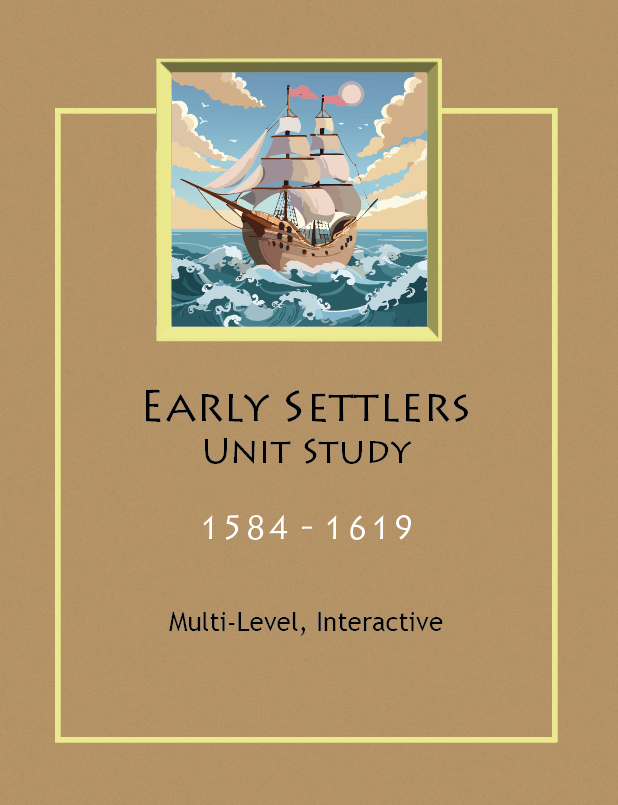
Available in Paperback OR Printable Download
199 pages (Includes Student Pages, Teacher Key, Schedule, Maps, Activities, and More)
Print It Now
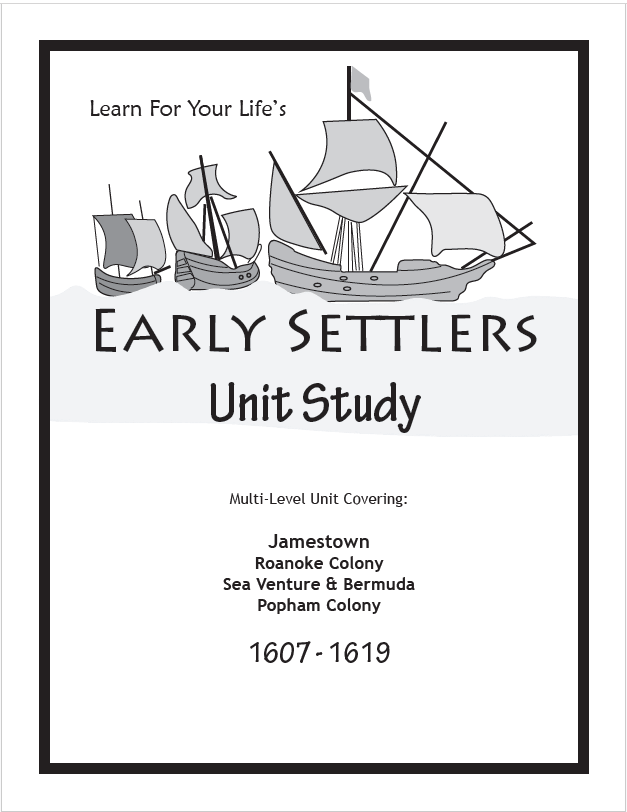
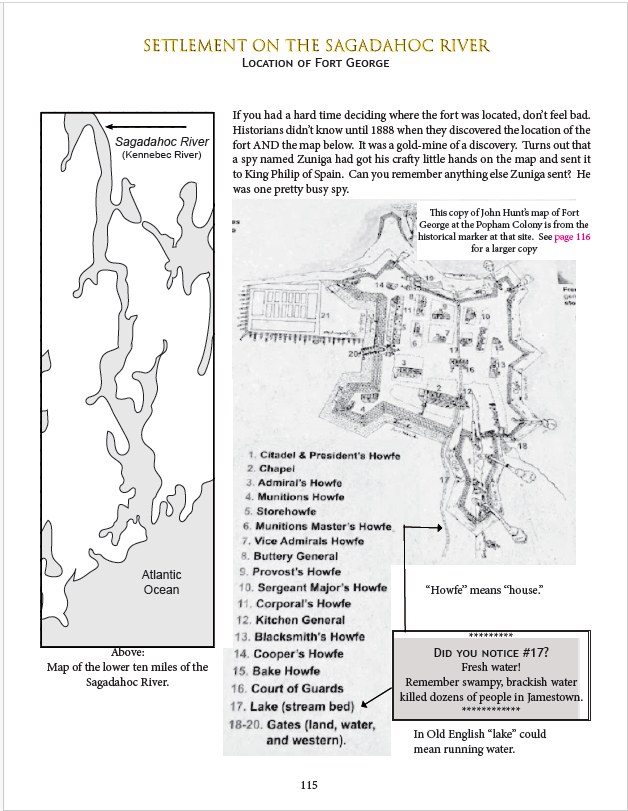
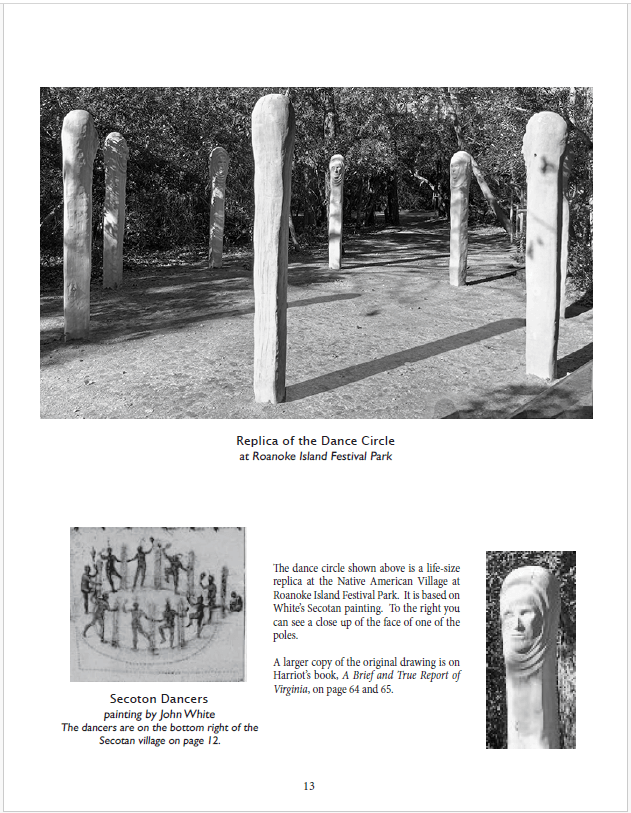
Student and Teacher's Material Included
$5.99 Download - 199 pages
![]()
Softcover Edition - Mailed to You
The same pages are in the softcover book and the printable file. Bound copy is great for repeat use or co-op leaders.
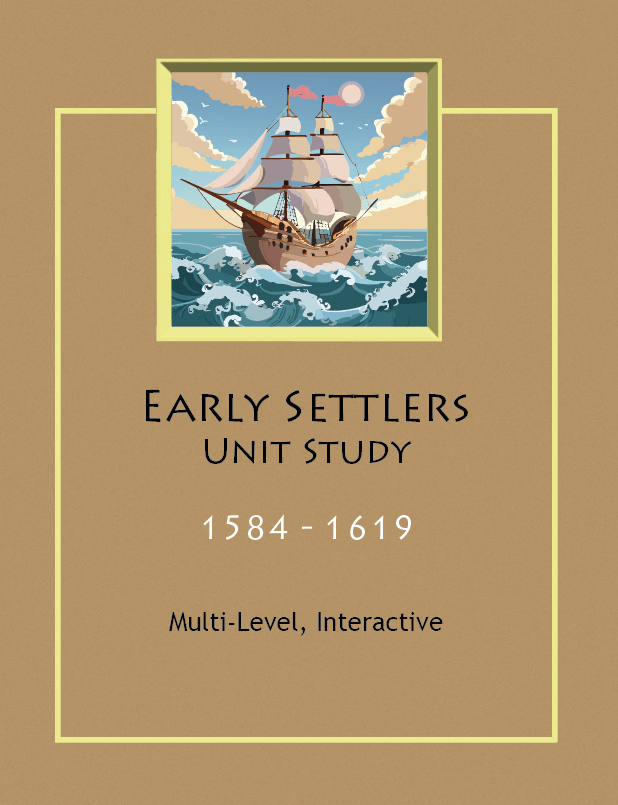
![]()
16.95 Soft Cover Manual
199 pages
Mailed to You
Early Settlers Pages
Check out our other pages for the Early Settlers Unit Study
Get the Lion To Guard Us Unit Study
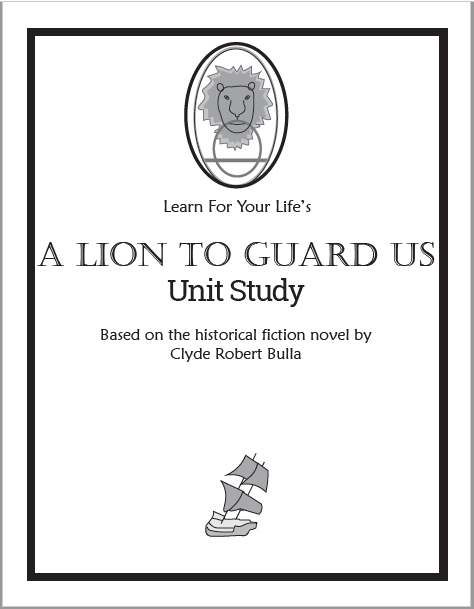
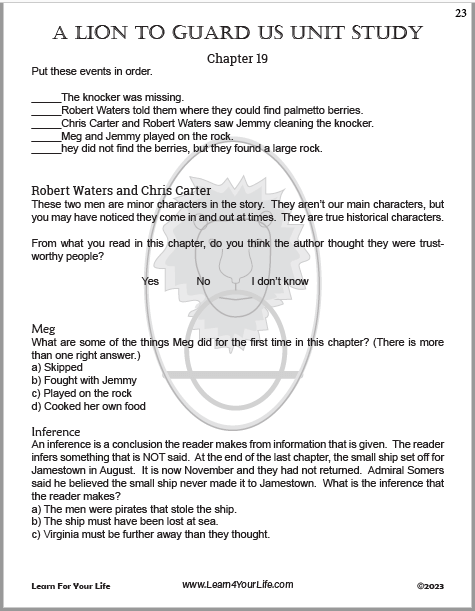
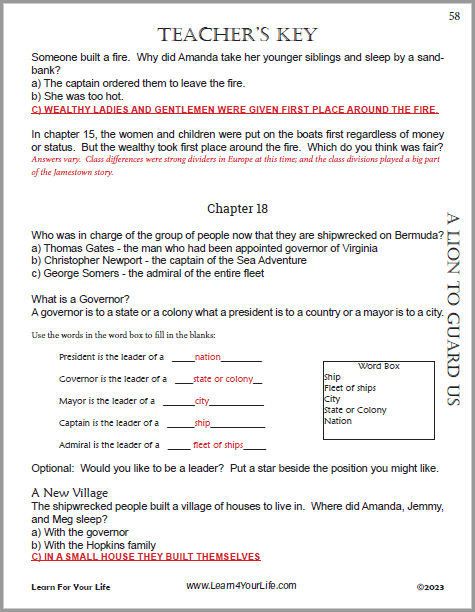
Student Guide AND Teacher's Answer Key Included
$2.99 Download - 78 pages
![]()
Our pages for A Lion To Guard Us
Clyde Bulla's Historical Fiction of Jamestown & the Sea Venture


About Our Site
Hands-On Learning





